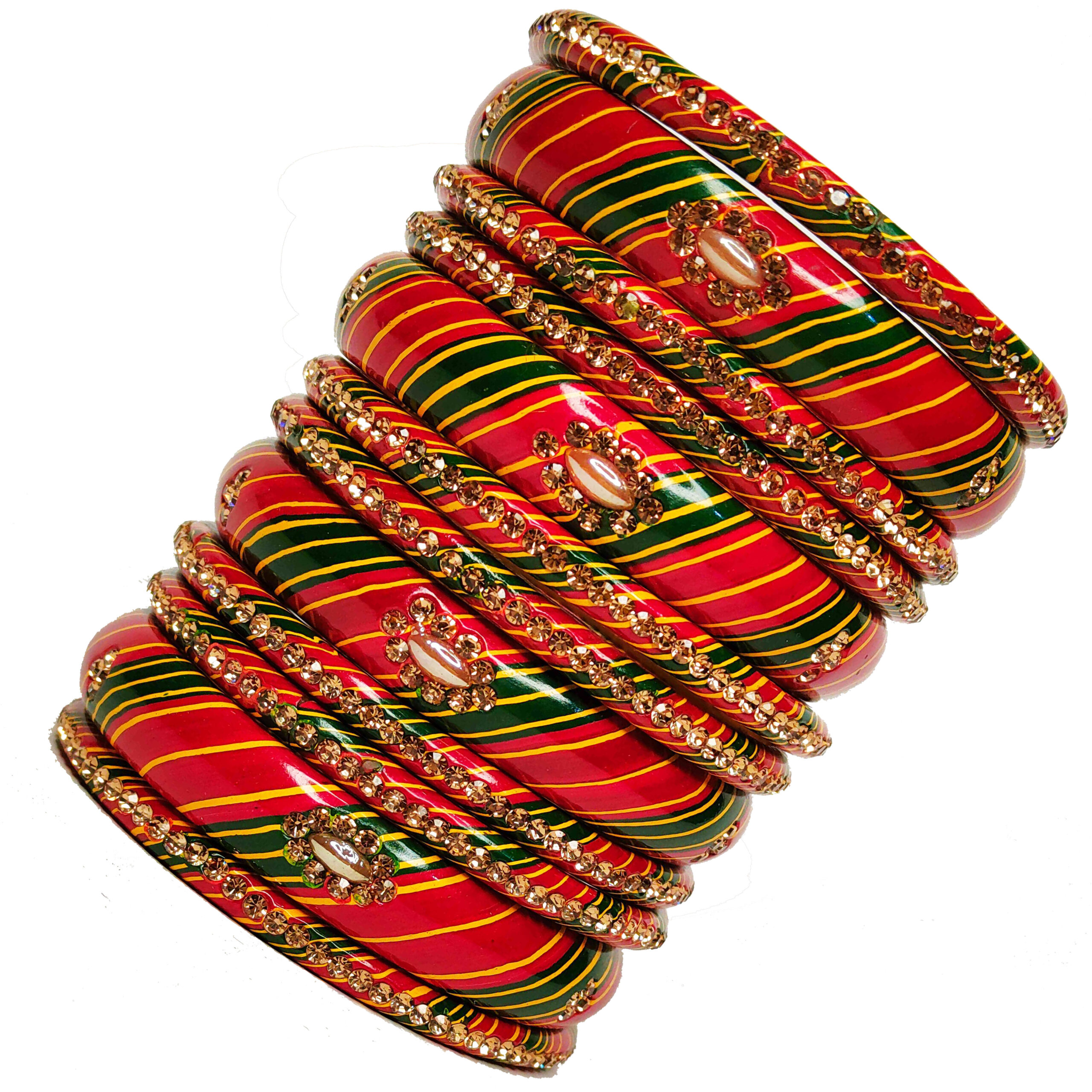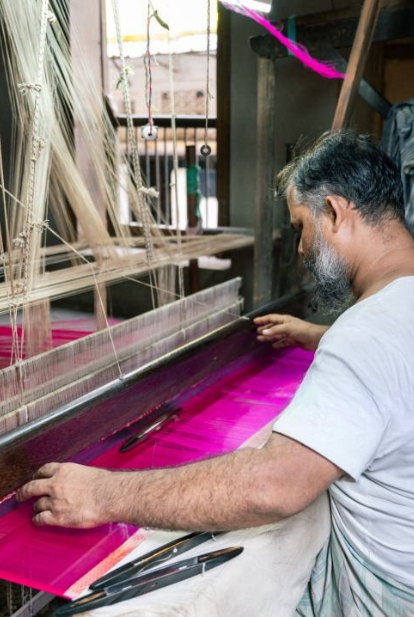Lac bangles, vibrant symbols of India’s artisanal heritage, are more than just jewelry—they are a celebration of history, artistry, and cultural identity. Crafted from natural lac resin, these bangles have adorned wrists for centuries, embodying regional traditions and evolving with modern aesthetics. Here’s an in-depth exploration of their significance, making, and legacy.
1. Historical Roots and Regional Significance
Lac bangles trace their origins to ancient India, with references in texts like the Atharva Veda and the Mahabharata . The craft flourished in regions such as Rajasthan, Bihar, Karnataka, and Andhra Pradesh, each adding unique cultural flavors:
Rajasthan: Brides wear lac bangles as auspicious symbols, with designs like gulali choodha (red) and hare bandon ka choodha (green) marking marital status and festivals . Jaipur remains a hub, renowned for divine bridal sets .
Bihar: Tribal communities like the Bhumij and Santal use lac bangles with inner cores of recycled lac (kiri), decorated with vibrant layers and motifs like fish or peacocks .
Karnataka: Artisans here blend intricate patterns with vibrant hues, preserving techniques passed through generations .
2. The Art of Crafting Lac Bangles
The process is labor-intensive, blending chemistry and artistry:
Material: Lac resin is harvested from secretions of the Kerria lacca insect, mixed with wax, pigments, and opacifiers like titanium or lithopone .
Shaping: Lac is rolled into coils on metal (brass/steel) or wooden bases, heated, and molded. Artisans stretch and cut the resin into bangle lengths, often using tapered mandrels for sizing .
Embellishments: Stones, mirrors, or gold foil are affixed using heat, while techniques like abrikam (marbleized patterns) or meenakari (enamelwork) add intricacy .
3. Cultural and Ritualistic Importance
Weddings: In Rajasthan, brides wear lac bangles as part of chooda sets, symbolizing prosperity . Punjabi brides don red-and-white bangles (chura) for marital bliss .
Festivals: Colors denote occasions—red for weddings, pink for Holi, and green for Teej .
Tribal Identity: In Bihar, lac bangles signify marital status among tribal women, often paired with vermillion containers (sindurdan) during rituals .
4. Sustainability and Challenges
Eco-Friendly Appeal: Lac, a biodegradable resin, positions these bangles as sustainable alternatives to plastic. However, deforestation threatens lac insect habitats, raising material costs .Artisan Decline: Traditional Lakhera communities face dwindling numbers, with Rajasthan’s furnaces dropping from 2,000 to 200 in a generation .Organizations like the Indian Institute of Natural Resins and Gums strive to revive the craft .
5. Modern Adaptations and Global Appeal
Design Innovations: Artisans blend traditional motifs with contemporary styles, offering customization for B2B markets—think geometric patterns or minimalist designs .
Global Markets: Brands like Desifavors and Kritikala export lac bangles worldwide, often highlighting ethical sourcing and women artisans .
Conclusion: Preserving a Legacy
Lac bangles are a bridge between India’s past and present. While challenges like industrialization loom, their timeless appeal lies in their stories—of insects, artisans, and age-old rituals.
By supporting sustainable practices and artisanal communities, we ensure this vibrant craft continues to jingle on wrists for generations.



